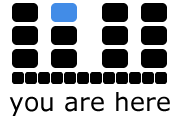Organizing Research Through SITM
From my perspective, operating through a “Standards in the Making” (SITM) approach highlights the difficulties and opportunities involved in making research move both within and against received knowledges of all types. In other words, I think that there is something to be gained, strategically, in our consideration of metadata as an implicit concern in any research/writing situation; between the evidence that is accumulated and the particular analytic lens that is applied to any given academic situation, different types of knowledge-making are enabled by the frames and categories which dictate (often covertly) the ways in which information of all kinds can be made meaningful. This emphasis on “making standards†is, admittedly, less an inquiry in or about metadata than it is an inquiry that moves through the opportunities afforded through metadata by laying the apparatus of knowledge-production bare. But as a critical practice in itself, SITM can be envisioned as a way of concretely staging a whole series of engagements which make questions of metadata into questions of research through lines of inquiry directed at the archive itself — how to do research, not simply what it looks like.
I’m fascinated by the way that this approach requires us (as teachers and scholars) to critically engage received “standards†in order to construct critical, creative standards of our own. One form of this SITM approach might ask us to encounter the limits of conventional metadata categories by asking: what is made visible, and what is rendered invisible, by the current organizational schema? The lesson here is that it is not enough to simply ask what the archive contains; you must also ask how that material can be arranged so as to enable certain lines of inquiry. A SITM approach to metadata makes it so that such questions do not have to be confined to abstract conversations about method or inquiry. By turning a critical eye to the rhetorical choices and epistemological assumptions that inform any presentation of data, students and scholars alike can construct their own claims with a clearer understanding of how they articulate to and digress from the arguments that have come before. These engagements can also be explorative and unpredictable, as every critique also begs for emergent categories which cut across the archive, organize it in new ways and enable new conclusions which are informed equally by past scholarship and creative readings.
